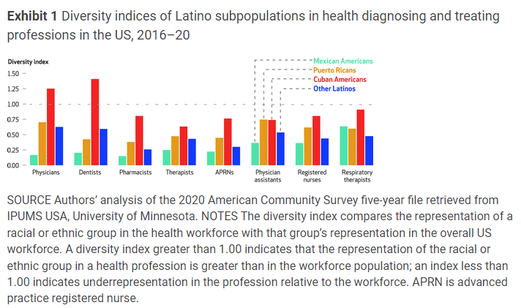You may also be interested in: |
Articles and ReportsRESEARCH SPOTLIGHT
Key Findings: ArticlesDiversity of the U.S. Public Health Workforce Pipeline (2016–2020): Role of Academic Institutions
Utilization of a “Diversity Index” to Assess Racial Diversity of US School of Pharmacy Graduates
Documenting Latino Representation in the US Health Workforce
ESTIMATION AND COMPARISON OF CURRENT AND FUTURE RACIAL/ETHNIC REPRESENTATION IN THE U.S. HEALTH CARE WORKFORCE
Limited, uneven progress is increasing racial and ethnic diversity of dental school graduates
Citation: Salsberg E, Brantley E, Westergaard S, Farrell J, Rosenthal C. Limited, Uneven Progress is Increasing Racial and Ethnic Diversity of Dental School Graduates. Journal of Dental Education. 2022;86(1):107-116. doi:10.1002/jdd.12793. Epub 2021 Sep 20. LESSONS LEARNED FROM WORKFORCE DIVERSITY TRACKER FOR GLOBAL HEALTH
Key Findings: ReportsTHE RACE AND ETHNICITY OF THE LOUISIANA HEALTH WORKFORCE
The Race and Ethnicity of the California Health Workforce
|
© 2024 | 2175 K Street NW, Suite 250, Washington, DC 20037 | (202) 994-3423 | GW Privacy Policy

